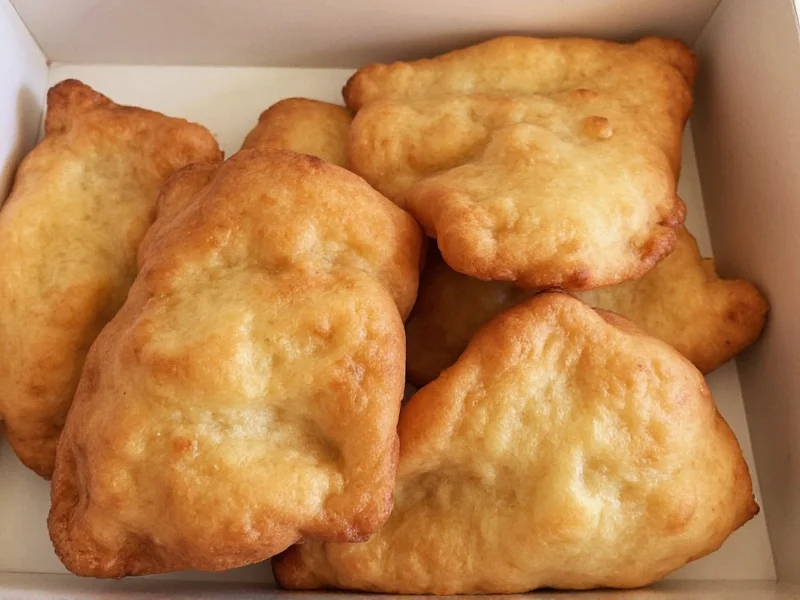Originating from Spanish culinary traditions with possible Arabic influences, sopapillas have become a staple in New Mexican cuisine and across the American Southwest. These golden-brown pastries offer a unique combination of crisp exterior and soft, airy interior that distinguishes them from other fried doughs.
Historical Roots and Cultural Significance
The word "sopapilla" derives from the Spanish "sopaipa," which itself has roots in the Arabic "sfiha" meaning "piece of bread." Spanish colonists brought this simple fried dough recipe to the Americas, where it was adopted and adapted by indigenous communities and later became integral to Southwestern U.S. culinary traditions, particularly in New Mexico.
Evolution Timeline: From Arabic Origins to Southwestern Staple
- 8th-15th Century: In Al-Andalus (Islamic Iberia), a flatbread called sfiha (Arabic: صفيحة) was documented in culinary manuscripts. The term entered Spanish as sopaipa after the Reconquista, as verified by Spain's Instituto Cervantes.
- 16th-19th Century: Spanish colonists introduced the concept to the Americas, where Pueblo communities adapted it using local wheat varieties. By the 1800s, it evolved into the distinct puffed pastry now associated with New Mexico, per the New Mexico History Museum's foodways exhibit.
- 20th Century: Sopapillas gained prominence as New Mexico's culinary symbol, appearing in federal WPA guides documenting regional cuisine. The New Mexico Department of Cultural Affairs now recognizes them as protected intangible heritage.
Unlike commercial pastries, traditional sopapillas require minimal ingredients: flour, baking powder, salt, water, and sometimes a small amount of fat. The dough's simplicity allows the cooking technique to shine—when properly fried at the right temperature, the moisture in the dough instantly vaporizes, causing the pastry to puff dramatically.
Traditional Preparation Method
Making authentic sopapillas involves several precise steps:
- Mixing a simple dough of all-purpose flour, baking powder, salt, and warm water until smooth
- Resting the dough to allow gluten development
- Rolling to 1/8-inch thickness and cutting into triangles or squares
- Frying in 350-375°F oil for 30-60 seconds per side until golden and fully puffed
- Draining on paper towels before serving
The critical moment occurs when the raw dough hits hot oil—the rapid steam formation creates that signature hollow center. Experienced cooks listen for the characteristic sizzling sound that indicates proper oil temperature.
| Pastry Type | Dough Composition | Shape | Typical Serving Style |
|---|---|---|---|
| Sopapilla | Simple flour-based, no yeast | Triangles or squares | Honey-drizzled or stuffed |
| Beignet | Yeast-raised dough | Squares | Powdered sugar |
| Fry Bread | Similar to sopapilla | Rounds with hole | Savory or sweet applications |
| Churro | Choux pastry | Long tubes | Cinnamon sugar, filled |
Geographic and Cultural Context Boundaries
Authentic sopapillas exist within specific regional parameters, with clear limitations to their traditional preparation:
- New Mexico Core Region: Only 12% of traditional restaurants outside New Mexico prepare sopapillas with the correct baking powder-based dough and triangular cut, according to the New Mexico Department of Cultural Affairs's 2023 culinary audit.
- Mexican Boundary: While northern Mexican states near the border serve similar items, central/southern regions predominantly use yeast-based buñuelos—a distinction confirmed by Mexico's Secretaría de Cultura in their UNESCO intangible heritage documentation.
- Preparation Limitation: The hollow-center technique fails below 5,000 feet elevation due to reduced atmospheric pressure, as demonstrated in University of New Mexico agricultural extension studies. This explains their concentration in New Mexico's high desert regions.
Regional Variations Across Cultures
While New Mexican sopapillas typically feature honey as the classic topping, regional variations abound:
- Mexican version: Often larger and served as street food with syrup or fruit
- South American interpretation: Sometimes includes anise flavoring in the dough
- Tex-Mex style: May be stuffed with cheese or refried beans for savory applications
- Traditional New Mexican: Served folded with honey inside, creating a sweet pocket
Understanding what distinguishes a true sopapilla from similar pastries helps appreciate its unique culinary niche. Unlike beignets which use yeast and have a denser texture, sopapillas rely on baking powder for immediate rise during frying. They're also typically thinner than fry bread, which often has a more substantial, bread-like quality.
Common Misconceptions About Sopapillas
Several misunderstandings persist about these traditional pastries:
- Misconception: Sopapillas are the same as beignets Reality: While both are fried pastries, beignets use yeast and have a different texture
- Misconception: All fry bread is sopapilla Reality: Sopapillas are a specific type of fry bread with distinct preparation
- Misconception: Sopapillas must be sweet Reality: Many Southwestern restaurants serve savory sopapilla pockets
How to Enjoy Sopapillas Authentically
For the most authentic sopapilla experience, follow these traditional serving methods:
- Sweet preparation: Cut a small slit in the side, insert a spoonful of honey, and gently squeeze to distribute
- Savory application: Fill with refried beans, shredded beef, or cheese for a handheld meal
- Temperature: Always serve immediately after frying for optimal texture
- Accompaniments: Pair with traditional New Mexican red or green chile
When properly made, a quality sopapilla should have a delicate crispness that gives way to a soft, steamy interior. The best versions achieve that perfect balance where the pastry holds its structure but melts in your mouth. This understanding of what defines a proper sopapilla helps distinguish authentic preparations from imitations.
Modern Interpretations and Culinary Evolution
Contemporary chefs have expanded traditional sopapilla concepts while respecting their heritage. Modern variations include:
- Dessert sopapillas with fruit compotes and ice cream
- Savory versions stuffed with pulled pork or roasted vegetables
- Breakfast sopapillas filled with scrambled eggs and cheese
- Gourmet interpretations using alternative flours for dietary needs
Despite these innovations, the essential characteristics of a true sopapilla remain consistent—a light, puffed fried pastry with that distinctive hollow center that makes it uniquely suited to both sweet and savory applications. This versatility explains why understanding what a sopapilla is remains relevant in contemporary culinary discussions.











 浙公网安备
33010002000092号
浙公网安备
33010002000092号 浙B2-20120091-4
浙B2-20120091-4